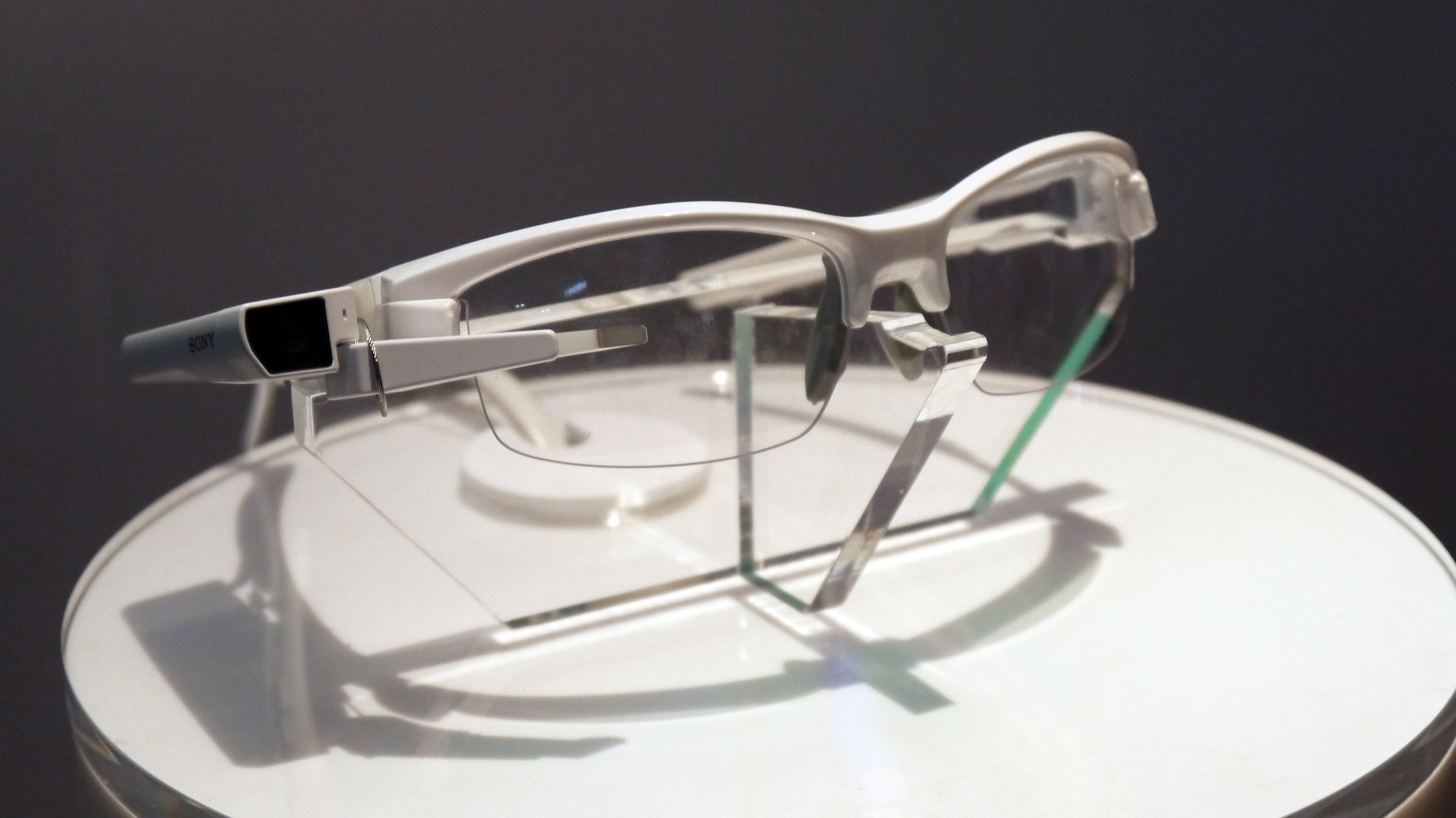Early Verdict
A cool idea from Sony and one that shows great promise for augmented reality in wearables.
Pros
- +
Less obtrusive than other versions
- +
Waterproof
Cons
- -
Still too large to be conventional
- -
Battery life is suspect
Why you can trust TechRadar
The Sony SmartEyeglass Attach is a new idea from Sony (surprisingly) to bring augmented reality to your run.
Well, in theory the piece can attach to any pair of glasses and could be used to improve any activity by placing info near your pupil, but the first iteration is designed for sport, and specifically running seems to be the main use.
The idea is simple and very like Google Glass: a supplementary clips onto the side of the specs (currently only the official ones used in the prototype, but could be developed to snap onto any pair) and then instantly imbues them with a small OLED screen and camera.
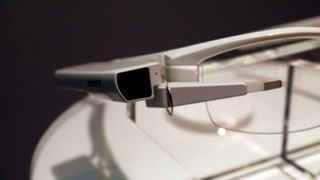
The project, which is open source and means that the developer community can start to find ways to use it as well, is designed primarily to help runners with navigation in new cities, allowing them to find and trot around new routes without having to stop and pull out their phone every time an unexpected street appears.
We've had a few more specs land on these: the display module has a 0.23-inch screen, with a VGA resolution of 640 x 400 pixels with 800 nits brightness and 10000:1 contrast ratio - actually pretty nifty specs for a device like this, although that confirms why the display is so grainy.
The little screen is only 0.5cm high, which means it's really unobtrusive when viewed. It can take a little while to get the fit right, but when you do any direction of head tilt still spews information into your eyes.
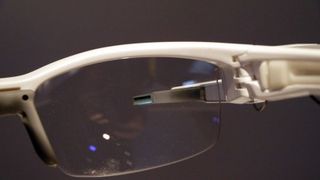
I obviously didn't get to try the specs out at speed, but it doesn't feel like the small screen would move around that much, so should keep pumping any information into your eye throughout a run.
The benefit here is that it can even do away with a GPS watch and have all the information accessible at all times, meaning a much more reliable way to structure a run.
The downside is that the device isn't autonomous yet, which is irritating given it's quite large and could easily pack GPS.
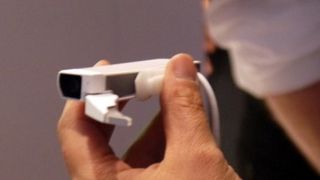
It's not cumbersome to wear, but it does have a large element where the battery and components are held - presumable this is why Sony's stuck a camera on the front as it seems a bit unnecessary, but if the space is there, it might as well be used.
Sony also told me that the device was possibly going to be engineered so users could place it over either eye, making it easy to customise to fit - another good step, given these kinds of devices live or die by being able to fit into user preference.
The SmartEyeglass Attach is also waterproof, as an excruciating video demo showed when the wearer threw a bottle of water all over her face, meaning you could use them when sweating without worry (although nobody could confirm to me the IP rating, so might not work underwater).
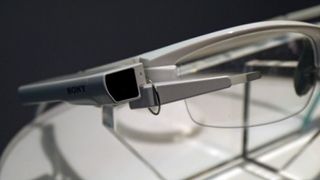
In terms of a release date, the Sony SmartEyeglass attach is coming 'in 2015' and as it's a prototype there's no word on price, nor which services or other brands will be tied into the device when it launches.
But in terms of usefulness, it feels like this new augmented reality headset could be a real winner for runners, as it's just small enough to be used without irritation. It still makes you look weird using it, but if you can get past that it would really supercharge your jogs around the park.
We liked
The idea is neat and the delivery decent - in terms of something that can show you information without needing to pull out a phone, it seems to work well.
We disliked
It's still bulky and camera feels unnecessary - plus there's no word on release date, price or battery life. Not being able to work untethered from a phone irks too.
Early verdict
A dark horse for the title of 'most interesting tech from CES' (at least in the fitness category) this could be the time when augmented reality starts to finally make an impact on decent looking specs.
Techradar's coverage of the future of tech at CES 2015 LIVE is brought to you courtesy of Currys PC World. View Currys' range of Smart technology here and computing here

Gareth has been part of the consumer technology world in a career spanning three decades. He started life as a staff writer on the fledgling TechRadar, and has grown with the site (primarily as phones, tablets and wearables editor) until becoming Global Editor in Chief in 2018. Gareth has written over 4,000 articles for TechRadar, has contributed expert insight to a number of other publications, chaired panels on zeitgeist technologies, presented at the Gadget Show Live as well as representing the brand on TV and radio for multiple channels including Sky, BBC, ITV and Al-Jazeera. Passionate about fitness, he can bore anyone rigid about stress management, sleep tracking, heart rate variance as well as bemoaning something about the latest iPhone, Galaxy or OLED TV.
What is a hands on review?
Hands on reviews' are a journalist's first impressions of a piece of kit based on spending some time with it. It may be just a few moments, or a few hours. The important thing is we have been able to play with it ourselves and can give you some sense of what it's like to use, even if it's only an embryonic view. For more information, see TechRadar's Reviews Guarantee.

With the Black Friday phones deals in full swing, should you wait for the Galaxy S25?

ICYMI: the week's 7 biggest tech stories from Casio's smart ring watch to YouTube’s Spotify Wrapped

MIT researchers say nanoscale 3D transistors made from ultrathin semiconductor materials promise more efficient electronics; quantum mechanics offers a path beyond silicon limits
